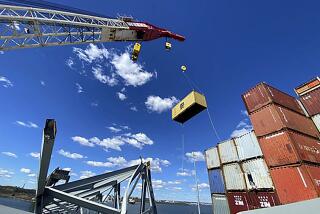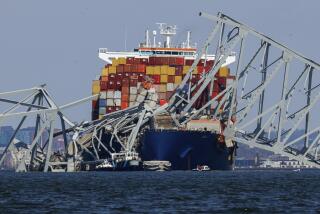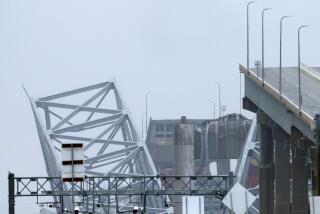South Korea says bones found near ferry wreckage were from animals

Bones found near the wreckage of a South Korean ferry belonged to animals, not missing passengers from the ship’s 2014 sinking in which more than 300 people died, the government announced in a surprising reversal Tuesday.
The Ministry of Oceans and Fisheries had said earlier in the day that salvage crews had found bones measuring 4 to 18 centimeters (1.5 to 7 inches) that were likely to be from one or more of the nine missing passengers, and that DNA tests would be used to verify their identities.
But hours later, investigators from the National Forensic Service concluded after inspecting the bones that they were from unidentified animals, not humans.
There was no immediate explanation from the government, which has been widely criticized over its handling of the disaster, of how the mistake occurred.
The discovery of the presumed human bones had triggered an angry reaction from the missing victims’ relatives, who criticized the government’s salvage operation as poorly organized and questioned whether other remains might have gotten lost while workers raised the sunken ship last week. The ministry also said shoes and other items believed to be from the missing victims were found.
Workers have just completed a massive operation to lift the corroding 6,800-ton Sewol from the sea floor. Recovering the remains of the missing victims would put the country a step closer to finding closure to one its deadliest maritime disasters.
The bones were found near a beam beneath the front side of the ferry, which had been loaded onto a semi-submersible transport vessel that will carry it to port.
A total of 304 people died in the disaster. Rescue workers recovered the bodies of 295 people — most of them students on a high school trip — before the government ended underwater searches in November 2014, seven months after the ship sank.
Crews on the transport vessel have drilled dozens of holes in the ferry in an effort to empty it of water and fuel before it is transported to a port in the city of Mokpo. Relatives had expressed concern that remains of the missing victims could slip out through the holes and get lost.
Earlier Tuesday, relatives of the missing passengers participated in an emotional memorial service on a boat near the transport vessel, with representatives of Catholic and Protestant churches and Buddhists delivering prayers wishing for the remains of the nine to be recovered.
Relatives threw into the sea yellow roses, a color that has become the symbol of their suffering, and watched from afar as crews on the transport vessel continued to empty the ferry of water and fuel.
“The ship has come up, but not the nine people inside it,” Lee Geum-hee, the mother of a missing schoolgirl, told a television crew. “Please don’t forget there are people inside the dirty, rusty and smelly wreckage. Please do the best and let us bring them back home.”
Once the ferry reaches the port in Mokpo, investigators will spend about a month cleaning it and evaluating it for safety. They will then begin to search the vessel for the remains of the missing victims and look for clues that could further illuminate the cause of the sinking, which has been blamed on overloaded cargo, improper storage and other negligence.
More to Read
Start your day right
Sign up for Essential California for news, features and recommendations from the L.A. Times and beyond in your inbox six days a week.
You may occasionally receive promotional content from the Los Angeles Times.






